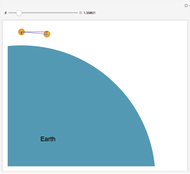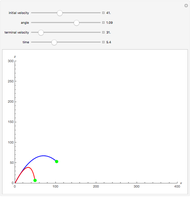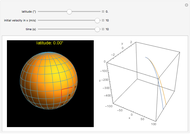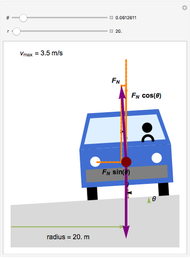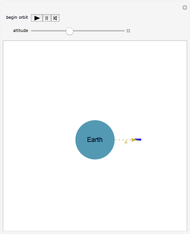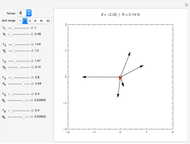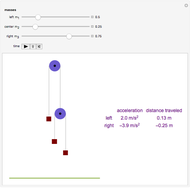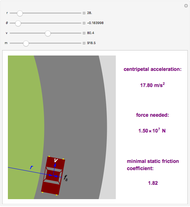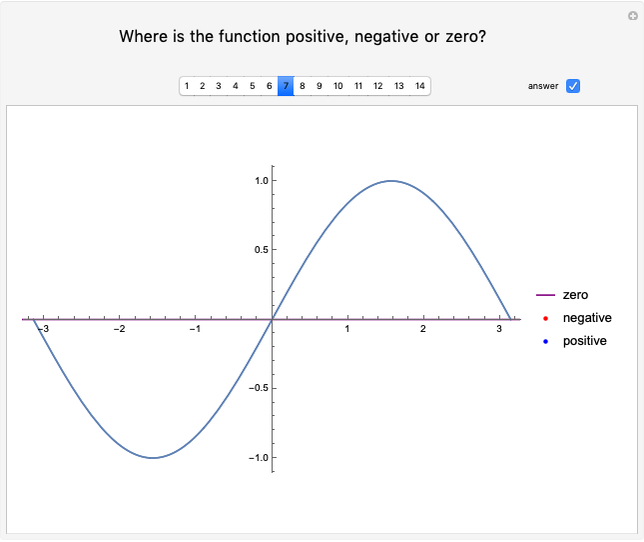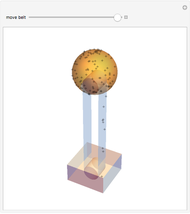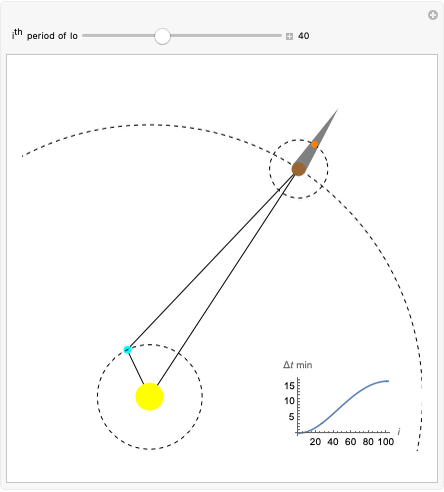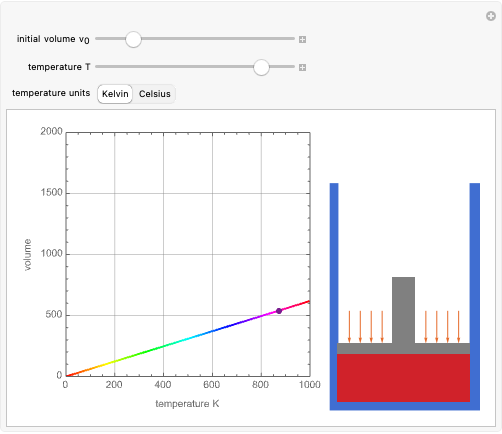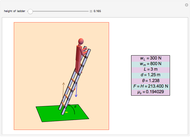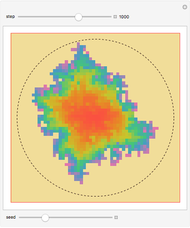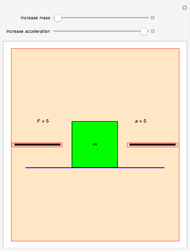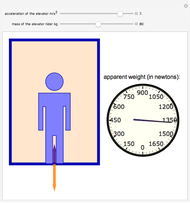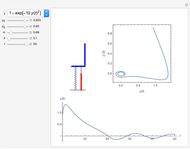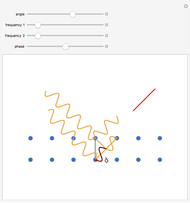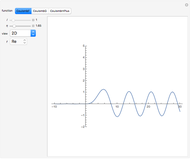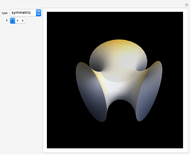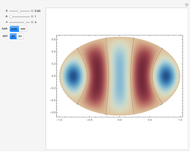Projectile Launched around the Earth

Requires a Wolfram Notebook System
Interact on desktop, mobile and cloud with the free Wolfram Player or other Wolfram Language products.
Suppose that a projectile is launched at a height  from the surface of the Earth (idealized here as a perfect sphere). If the initial velocity (
from the surface of the Earth (idealized here as a perfect sphere). If the initial velocity ( ) or the height is not large enough, the projectile can not travel very far during the time
) or the height is not large enough, the projectile can not travel very far during the time  , subject to its gravitational attraction. However, with a larger velocity, the projectile can travel a considerable distance around the Earth, and even remain in elliptical orbit if the velocity is large enough.
, subject to its gravitational attraction. However, with a larger velocity, the projectile can travel a considerable distance around the Earth, and even remain in elliptical orbit if the velocity is large enough.
Contributed by: Enrique Zeleny (March 2011)
Open content licensed under CC BY-NC-SA
Snapshots
Details
This provides an explanation of why astronauts appear to be "floating" in a space shuttle. What really happens is that the shuttle, along with the astronauts, are in free fall toward the Earth simultaneous to their horizontal motion.
If the projectile exceeds the escape velocity, it can go into orbit. The same considerations apply to other celestial bodies, such as a moon or an asteroid.
If the Earth were flat, the path would be a parabola.
Permanent Citation
"Projectile Launched around the Earth"
http://demonstrations.wolfram.com/ProjectileLaunchedAroundTheEarth/
Wolfram Demonstrations Project
Published: March 10 2011







